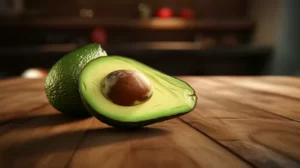Imagine being stranded on a tropical island, with access to only one supplement. Which one would you choose? If the island was sunny, you wouldn’t need the supplement because vitamin D would be naturally produced by your body due to the sun’s rays. Vitamin D is crucial for our body to function correctly, develop strength, and fight against diseases. Lack of vitamin D can lead to several health issues, such as weak brittle bones, weakened immune system, increased risk for type 2 diabetes, higher susceptibility to some cancers, increased risk of death from cardiovascular disease, and cognitive impairment in older adults.
Recent studies show that nearly 50 percent of the residents of Buffalo, New York, have insufficient amounts of vitamin D and 25 percent are considered deficient. Although several people are getting less vitamin D, there are some things you can do to ensure that you receive the full impact of vitamin D’s numerous benefits.
Eat mushrooms
However, it would be best if you consumed irradiated mushrooms. After salmon and light tuna canned in oil, mushrooms are an excellent choice to get dietary vitamin D. Though certain foods are fortified with vitamins and minerals – like cereals – you shouldn’t rely on those sources. Fortified foods are also processed foods that contain tons of added sugar and preservatives that pack their own health-harming potential. That’s why you get the best nutrition from whole food sources.
Mushrooms, particularly shiitake, maitake, and portabella, are naturally high in vitamin D. But irradiated mushrooms, currently a focus of Professor Horvath’s research, produce a mega-dose of vitamin D. According to Horvath, the mushrooms go through a “little tanning bed” in the lab.
Similarly to how your skin produces vitamin D when exposed to the sun, mushrooms also make their own vitamin D in response to sunlight or UV rays. It’s easy to “irradiate” mushrooms yourself, and if you don’t own a miniature tanning bed, all you need is sunlight.
How to make your own irradiated mushrooms
Paul Stamets, the founder of Fungi Perfecti and an advisor for the Program of Integrative Medicine at the University of Arizona Medical School in Tucson, demonstrates how you can produce 46,000 IUs of vitamin D by irradiating just 3.5 ounces (100 grams) of shiitake mushrooms with natural sunlight.
To create irradiated mushrooms, follow these steps:
- Obtain fresh organic shiitake, maitake, button, oyster, shimeji, portabella, or other mushrooms.
- On a sunny day in June, July, or August, slice the fresh mushrooms. Place them evenly on a tray exposed directly to the sun from 10 a.m. to 4 p.m.
- Before nightfall, cover the mushrooms with a layer of cardboard to block moisture from dewfall.
- On the next clear day, repeat exposure to the sun from 10 a.m. to 4 p.m.
- Remove the mushrooms and finish drying (if necessary in a food dehydrator) until they are crispy.
- When thoroughly dry, store in a glass jar or sealed container. Adding a tablespoon of uncooked rice as a moisture absorber will help keep the mushrooms dry. The mushrooms should be good for a year or more, depending on conditions.
- Take 10 grams daily per person, about a small handful. Rehydrate in water for one hour. The mushrooms will swell. Then cook as desired.
Irradiated mushrooms can be reconstituted and added to soups, sauces, and just about anything you’d normally eat them in. Your body’s vitamin D receptors in every organ will thank you for providing this essential nutrient.



